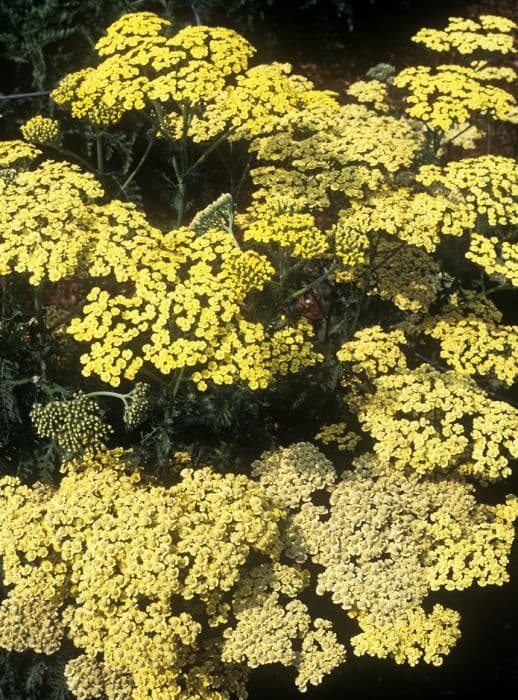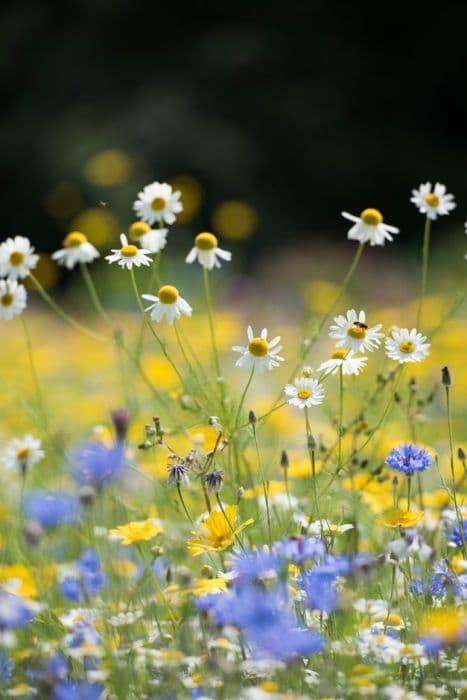Dahlia Dahlia 'Grenadier' (D)

ABOUT
Dahlia 'Grenadier' is a vibrant ornamental plant known for its striking flower display. Typically, the blooms of this dahlia exhibit a rich, fiery red color that makes them stand out in any garden setting. The flowers are sizeable and have a full, rounded shape, consisting of multiple layers of petals that can appear almost ruffled at the edges, adding to their voluminous form. Each petal is somewhat elongated with pointed tips, and they are arranged in a spiral or whorl, creating a sense of depth and complexity in the flower head. This arrangement of petals contributes to the fullness and the eye-catching appeal of the blossoms. The center of the flower features a contrasting group of smaller petals and reproductive structures that can sometimes be a different hue, adding to the flower's overall interest. The foliage of Dahlia 'Grenadier' is also worth noting, as it creates a lush backdrop for the showy blooms. The leaves are typically a deep green color, offering a striking contrast that helps the red flowers pop even more. These leaves are compound, with leaflets that have serrated edges giving them a somewhat feathery appearance. The plant itself has a sturdy, upright habit, with strong stems that support the flower heads. This robustness allows the flowers to stand proudly and makes them excellent for cutting gardens, as the stems can support the weight of the large blossoms when used in floral arrangements. Overall, Dahlia 'Grenadier' is a plant that exudes vibrancy and drama through its sizeable red flowers. It is a popular choice for gardeners looking to add a bold splash of color to their landscapes.
About this plant
 Names
NamesFamily
Asteraceae
Synonyms
Garden Dahlia, Dahlia
Common names
Dahlia 'Grenadier'.
 Toxicity
ToxicityTo humans
Dahlias, including the Dahlia 'Grenadier', are generally considered non-toxic to humans. They are not known to cause poisoning if ingested. However, as with any non-food plant, ingestion in large quantities could potentially lead to gastrointestinal discomfort due to the presence of insoluble fibers. It's important to remember to only eat plants that are known to be safe and edible.
To pets
Dahlias, including the Dahlia 'Grenadier', are also generally considered non-toxic to pets such as dogs and cats. They should not cause any serious symptoms of poisoning if ingested by your pets. Nonetheless, consumption of plant material by pets can sometimes lead to mild gastrointestinal upset, including vomiting or diarrhea, particularly if they ingest a large amount. It is always a good practice to prevent pets from eating ornamental plants.
 Characteristics
CharacteristicsLife cycle
Perennials
Foliage type
Deciduous
Color of leaves
Green
Flower color
Red
Height
4 feet (1.2 meters)
Spread
2 feet (0.6 meters)
Plant type
Bulb
Hardiness zones
8
Native area
Mexico
Benefits
 General Benefits
General Benefits- Attracts Pollinators: The vibrant blooms of the Dahlia 'Grenadier' attract bees, butterflies, and other essential pollinators to the garden.
- Improves Garden Aesthetics: With its bright and large flowers, it enhances the visual appeal of gardens and landscapes.
- Versatile in Use: Suitable for use in borders, beds, and as cut flowers for floral arrangements.
- Long Blooming Season: Often blooms from mid-summer until the first frost, providing prolonged periods of color.
- Wide Range of Colors: Offers a variety of colors, which can be mixed and matched for diverse garden designs.
- Can Be Grown in Containers: Ideal for patios or balconies when grown in pots or containers.
 Medical Properties
Medical PropertiesThis plant is not used for medical purposes.
 Air-purifying Qualities
Air-purifying QualitiesThis plant is not specifically known for air purifying qualities.
 Other Uses
Other Uses- Dahlia bulbs can be utilized as a source of inulin, a prebiotic fiber that can be used as a sugar substitute for people with diabetes.
- When dried and ground into a powder, dahlia petals serve as a natural pigment for eco-friendly dyes and cosmetic products.
- The hollow stems of dahlias can be used creatively in floral crafts such as making natural straws for decorative drinks.
- Dahlias are used in gardens to attract pollinators like bees and butterflies, aiding in the pollination of nearby plants and vegetables.
- The petals of dahlias are edible and can add a burst of color to salads, desserts, and other dishes.
- With their bright, bold blooms, dahlias can be used in photography and art to study the interplay of light and shadow.
- Dahlia flowers can be used to create eco-friendly confetti that biodegrades, reducing pollution from events like weddings.
- These flowers are sometimes utilized in horticultural therapy programs to promote emotional well-being and stress relief through gardening.
- By planting dahlias, gardeners can influence the biodiversity of the area by providing habitat for various insects and birds.
- The structured geometry and variety of dahlias' blossoms are used as inspiration in design and architecture, teaching symmetry and pattern.
Interesting Facts
 Feng Shui
Feng ShuiThe Dahlia is associated with positive energy flow and is often used to add a burst of color to a garden, which according to Feng Shui can increase the vibrancy of the space. Its bright blooms can be employed to enhance the 'Wood' element in an area, symbolizing growth and new beginnings. It is considered good Feng Shui to place them in the east for health and family or southeast for wealth and abundance. However, it should be noted that severe overgrowth or a clutter of dahlias can signify stagnant energy, so it is essential to maintain balance.
 Zodiac Sign Compitability
Zodiac Sign CompitabilityThe Dahlia is not commonly associated with astrology practice and does not have specific zodiac sign compatibility. Therefore, "The Dahlia is not used in astrology practice".
 Plant Symbolism
Plant Symbolism- Elegance and Dignity: The Dahlia is often associated with sophisticated beauty owing to its intricate petals and stunning array of colors.
- Change and Diversity: As a flower with numerous varieties and vibrant hues, the Dahlia represents diversity and embracing change.
- Commitment and Bond: In Victorian times, Dahlias were given as a symbol of an everlasting union, making them an emblem of commitment.
- Strength in Adversity: Dahlias bloom for extended periods and can thrive in challenging conditions, symbolizing perseverance and inner strength.
- Wealth and Prosperity: The opulent appearance of Dahlia blooms has made them represent wealth and success.
- Creative Spirit: With their unique patterns and vivid colors, Dahlias are often linked to a burst of creativity and inspiration.
 Water
WaterDahlias, including the 'Grenadier', require a consistent watering schedule, especially during the growing season. Generally, they should be watered two to three times per week, making sure the soil is moist but not saturated. Depending on weather conditions, dahlias may need approximately 1 to 2 gallons of water each week. It's important to water at the base of the plant to keep the foliage dry and prevent fungal diseases. During hot, dry periods, additional watering may be necessary to maintain soil moisture.
 Light
LightDahlias like 'Grenadier' thrive in full sun exposure, which means they require at least 6 to 8 hours of direct sunlight per day. The best spot for these plants is in an area that receives unobstructed sunlight and is protected from strong winds. Partial shade is tolerable, especially in regions with extremely intense sun, but full sun is ideal for the healthiest blooms.
 Temperature
TemperatureThe 'Grenadier' dahlia prefers temperatures between 60 and 75 degrees Fahrenheit and can tolerate a range from just above freezing to about 90 degrees Fahrenheit. Dahlias are sensitive to frost, so it's critical to wait until the danger of frost has passed before planting them outdoors. They grow best in warm conditions with cooler night temperatures.
 Pruning
PruningPruning dahlias such as 'Grenadier' is essential for strong growth and vibrant blooms. Pinching off the main shoot after the plant has developed several sets of leaves will encourage bushier growth. Prune dead or damaged stems and spent flowers regularly to promote further blooming. The best time to prune is in late winter or early spring before new growth begins.
 Cleaning
CleaningAs needed
 Soil
SoilDahlias prefer well-draining soil with plentiful organic matter. A mixture of two parts garden soil, one part peat moss, and one part perlite works well for 'Grenadier' dahlias. The soil pH should be slightly acidic to neutral, between 6.5 and 7.0, to promote optimal growth and flowering.
 Repotting
RepottingDahlias, including 'Grenadier', typically do not need to be repotted as they are often grown as annuals. They should be planted each spring after the threat of frost has passed and dug up and stored during the winter in colder climates.
 Humidity & Misting
Humidity & MistingDahlias such as 'Grenadier' are adaptable to a wide range of humidity levels and do not require specific humidity conditions. Average ambient humidity is generally suitable for these plants.
 Suitable locations
Suitable locationsIndoor
Ensure bright light, moderate water, and good air circulation.
Outdoor
Plant in full sun, rich soil, after last frost date.
Hardiness zone
8-11 USDA.
 Life cycle
Life cycleDahlia 'Grenadier' (commonly known as Grenadier Dahlia) starts its life cycle as a tuber, which is planted in the ground in spring after the threat of frost has passed. The tuber sprouts and develops into a young plant, with foliage emerging from the soil and photosynthesis beginning. As the plant matures, it develops a robust stem and leaves, and eventually buds form. Following the formation of buds, the Grenadier Dahlia blooms in the summer to early fall, showcasing its vivid red flowers which attract pollinators. After the blooming period, the plant sets seeds, but gardeners often propagate Dahlias vegetatively via tuber division rather than by seed. With the onset of cooler temperatures and frost, the plant's aerial parts die back, and the tubers enter a period of dormancy over the winter, to be stored and replanted the next growing season.
 Propogation
PropogationPropogation time
Spring-Early Summer
Propogation: The Dahlia 'Grenadier', commonly known as Grenadier Dahlia, is often propagated during the spring when the danger of frost has passed. The most popular method of propagation for dahlias is by dividing the tubers. Each tuber, which is a swollen storage root, must have at least one "eye" or growth point from which the new plant will sprout. Before planting, these tubers can be cut using a sharp knife, making sure that each division has at least one healthy eye. The cut surfaces should be allowed to dry and callous over for a day or two to prevent rot. Plant the divided tubers in well-drained soil about 6 to 8 inches (15 to 20 centimeters) deep. Spacing between plants should be about 18 to 24 inches (approximately 45 to 60 centimeters) to ensure adequate room for growth.









